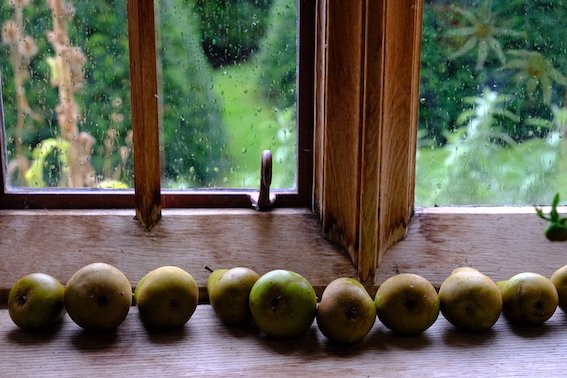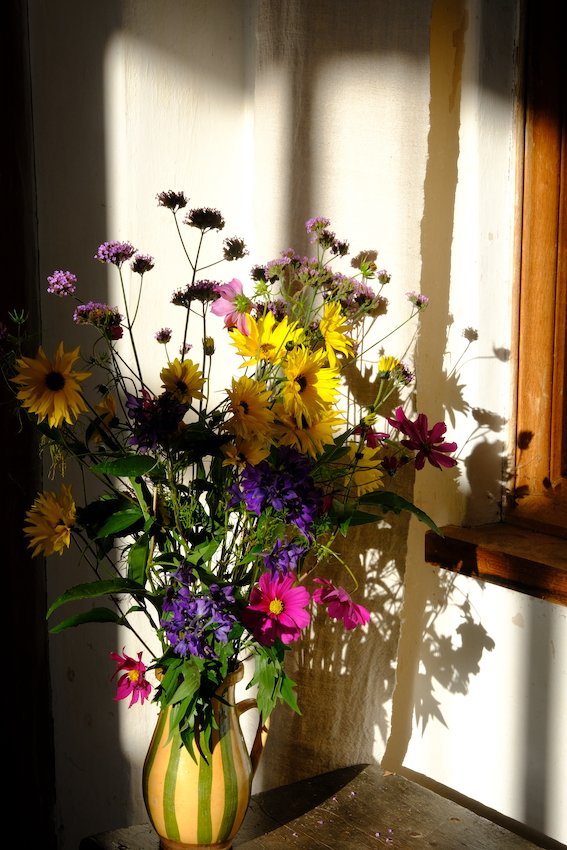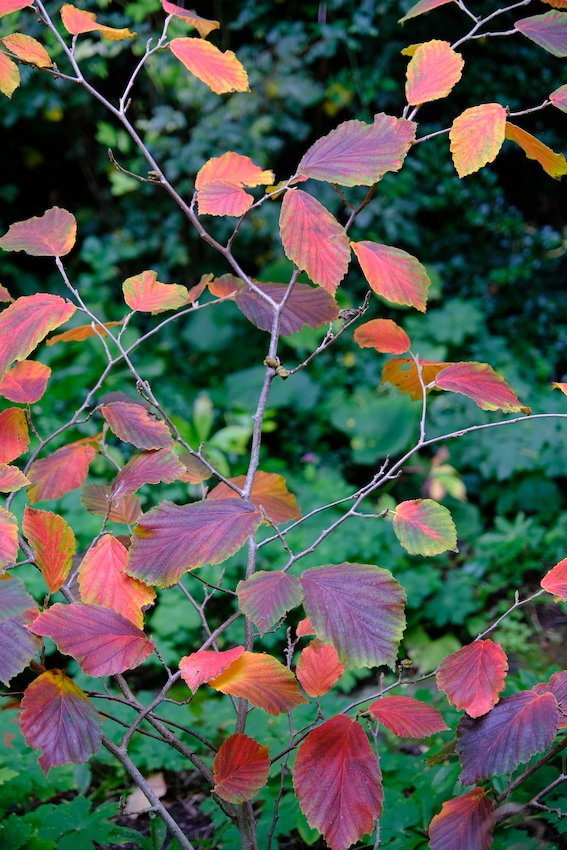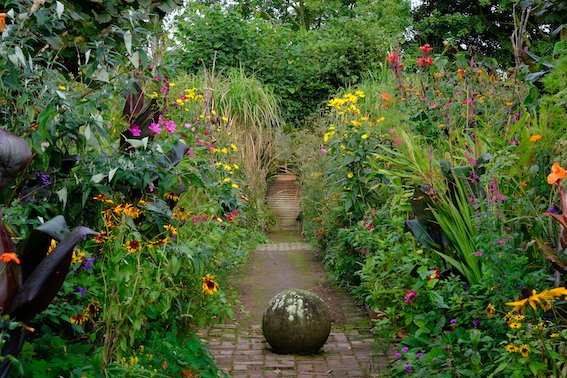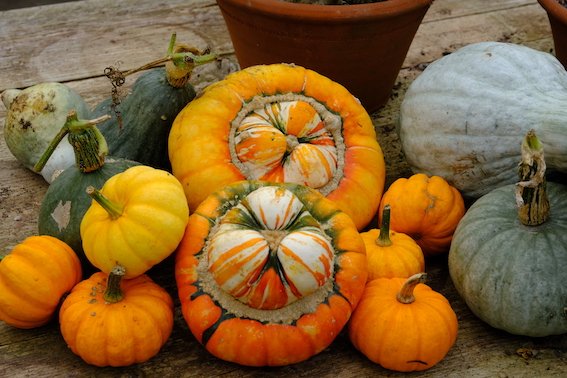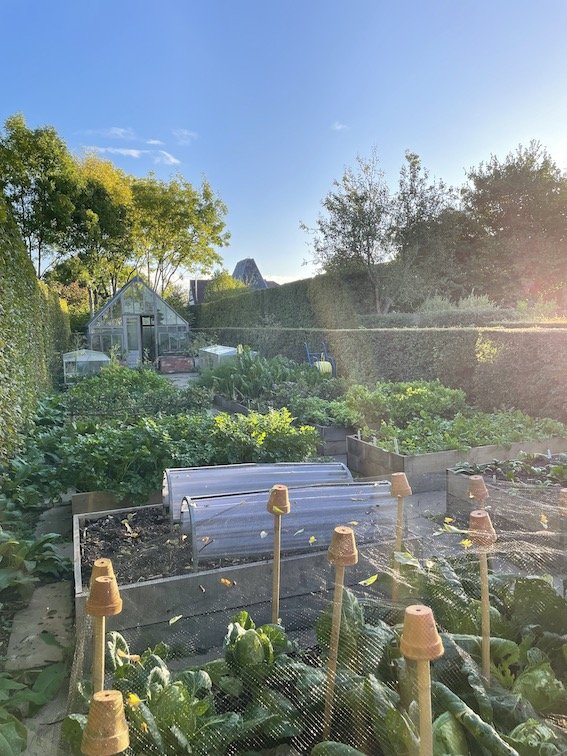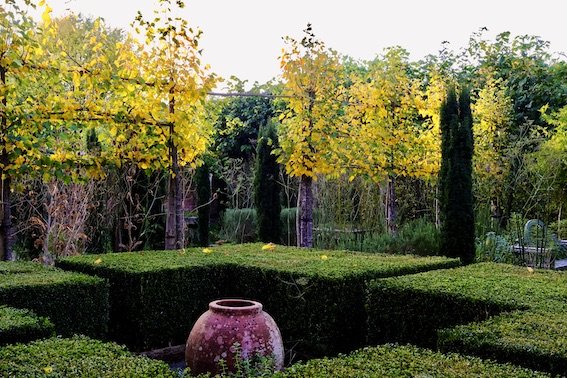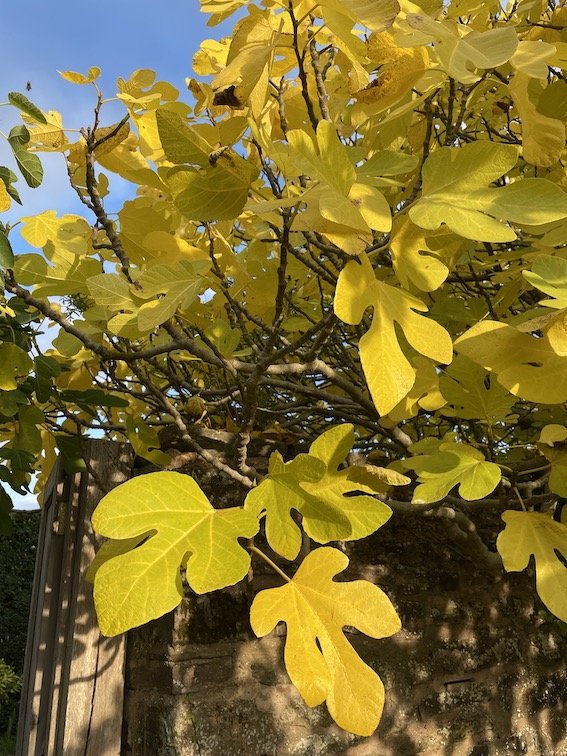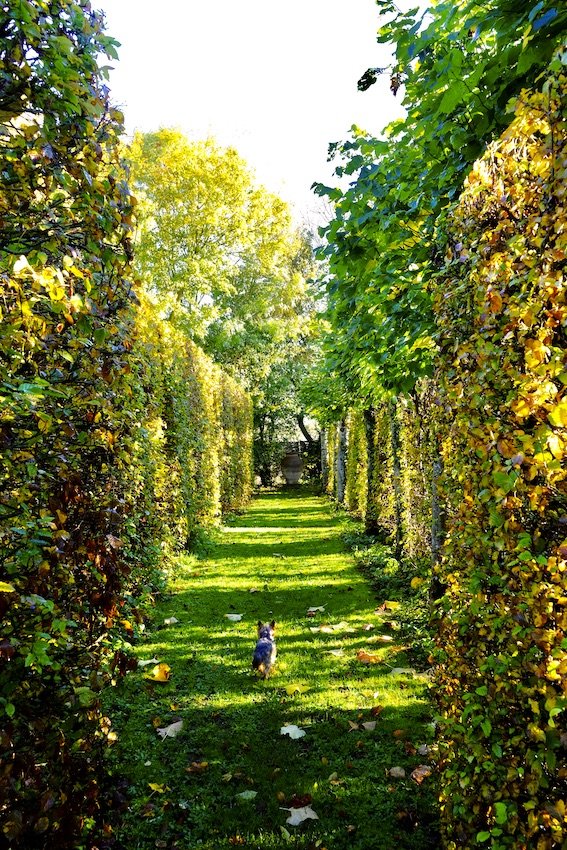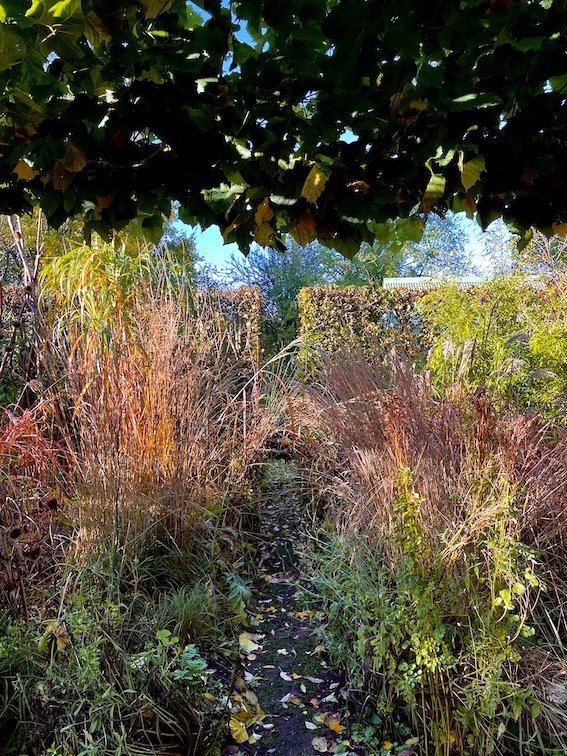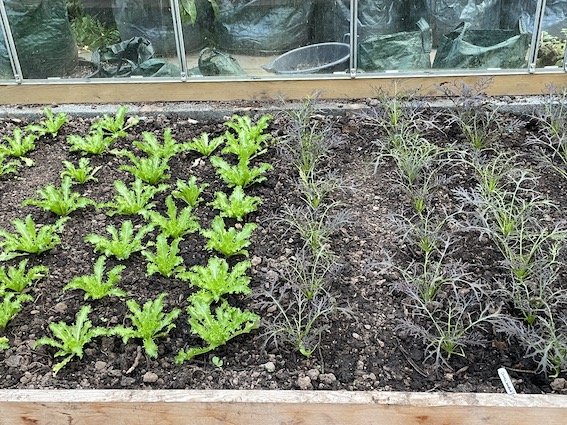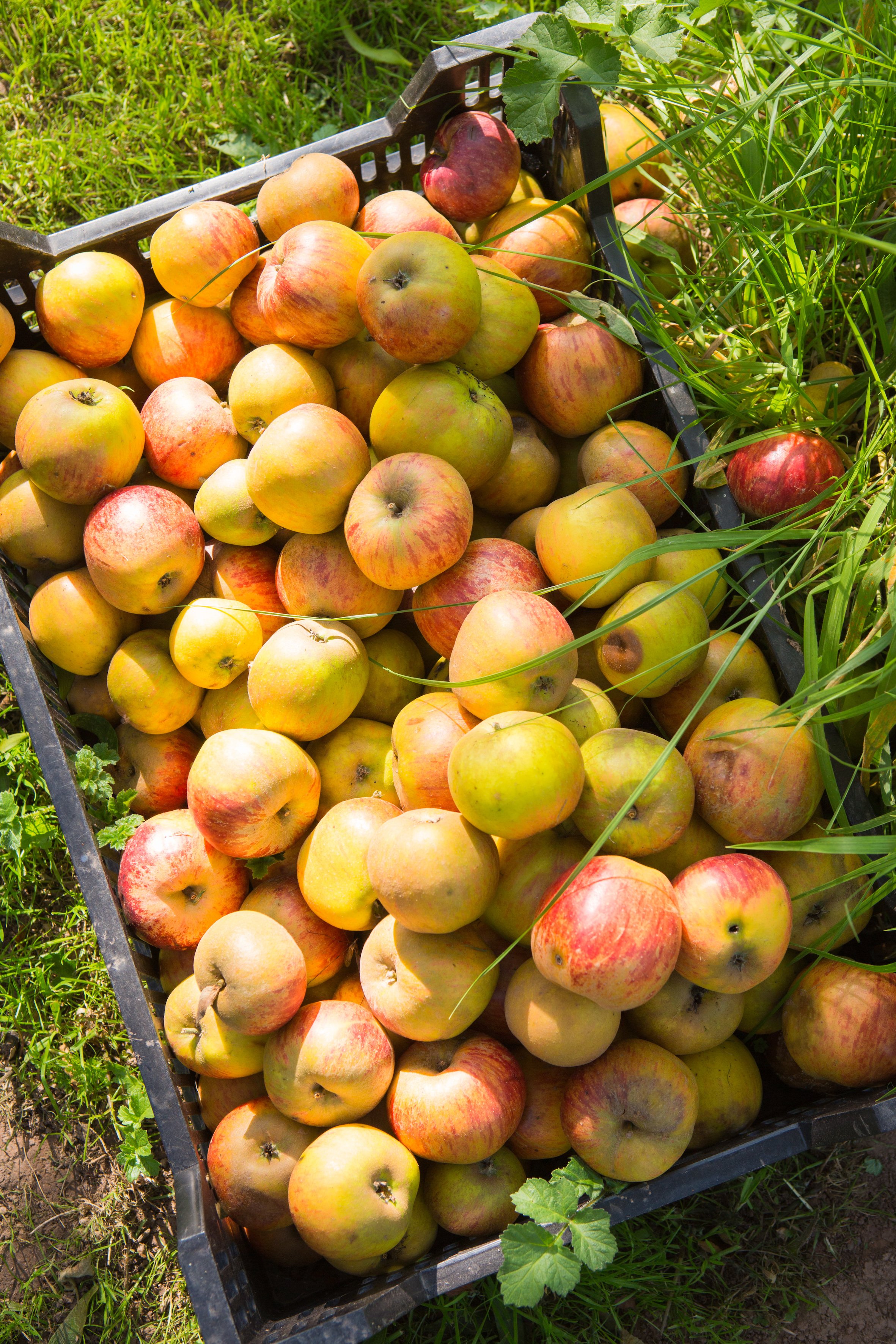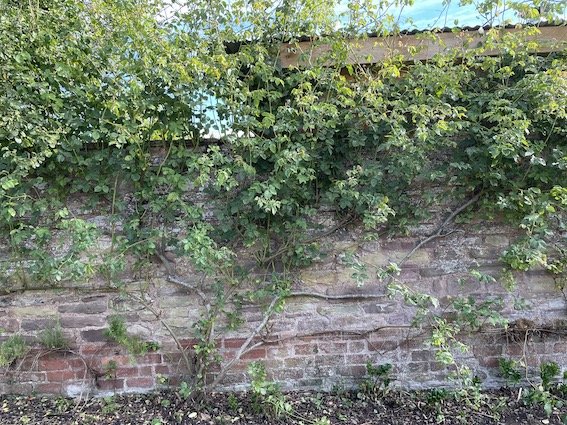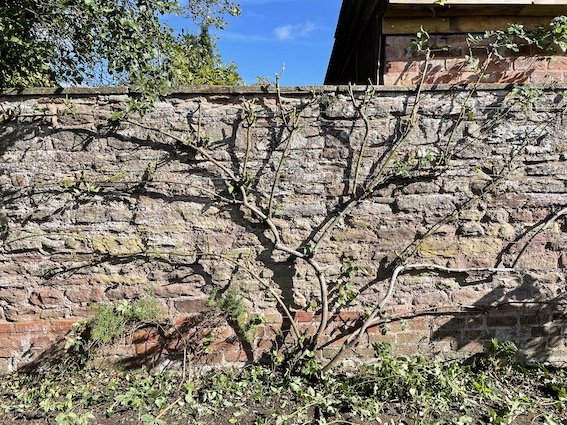October 2022
October begins flecked with summer but leaves with winter trailing hard on its heels. In the intervening weeks October light can be magical - although it is often a wet month here on the borders with Wales.
However, this year, after our exceptionally dry spring and summer, rain would be a blessing.
Filming for Gardeners' World ends in the last week of the month and it means that we can prepare for winter, making a mess that does not have to be tidied ready for the next shoot, protecting tender plants, planting bulbs, both in the ground and in pots, and gathering fruits - especially apples - to store.
However I am in the middle of writing a book which will be out in a year's time and photography for that will continue through the winter months.
Climate change means that October is now much milder across the country than it was even 20 years ago and noticeably more so than when I was a child in the 1950's and 60's. This means that plants from nearer the equator, like dahlias, tithonias and cannas will continue to flower through the month until the first real frost blackens them.
The process of gathering leaves begins now and is, I believe, as important as making compost. This is because every fallen leaf is potential leafmould and leafmould which, unlike compost, takes no turning, mixing or knowledge to make, is garden gold.
I am obsessive about making leafmould, gathering as many of the fallen leaves as possible, mowing them to chop them up and then stacking them in a big open heap so they can break down into a lovely rich, crumbly texture and become an essential component of our home-made potting compost.
But I also leave drifts and piles of leaves under hedges and trees to provide over-wintering cover for hedgehogs, frogs, small mammals and insects, along with stacks of logs and piles of prunings - all of which gives essential winter protection for these small creatures that contribute so much to the garden’s health.
Our borders do not suddenly disappear in October but gently fade, the intensity of colour gradually leaching away and at the first hint of frost we start bringing in all our tender plants such as bananas, cannas, dahlias, gingers and cannas.
In the vegetable garden there is a new range of produce with Florence fennel, climbing beans and some lettuce still harvested but root crops and brassicas taking over the stage for the coming months. In the greenhouse the tomato plants are all consigned to the compost heap and replaced with winter salads.
Above all, the days are getting shorter and on the last day of the month, at 2 am on October 31st, the clocks go back and it will be pitch dark by 5.30. Summer’s afternoon becomes winter’s night.
October Jobs
Invest in horticultural fleece and some cloches
If you do not already posses them, invest in horticultural fleece and some cloches. The point is that these are only useful if you have and employ them before you need them and there is no guarantee that there will not be a hard frost in October. Cloches are very good for rows of vegetables, keeping them dry as well as warm (although I always leave the ends open – happy to trade some heat for some ventilation) and fleece is the best temporary protection against frost, either laid out over small plants or draped over shrubs and bushes.
Bring tender plants in
Bring tender plants in under cover before they need protection. In my garden this includes Bananas, salvias, citrus, pomegranates, olives, pelargoniums, succulents, fuchsias, eucomis and hedychium but NOT dahlias and cannas, which can be left in situ until the first signs of frost damage have affected them. Then they can be cut back, dug up and bought indoors to check over before storing in old potting compost in a cool, dark place where they will stay alive but not grow over winter.
Keep deadheading
Keep deadheading throughout October, particularly the equatorial plants like dahlias. This will extend their flowering season and squeeze the last bloom from them. Spent dahlia flowers can be tricky to differentiate from unopened buds, but the foolproof difference is that when they have finished flowering they become pointed and a cone shape, whereas the unopened buds are rounded.
Collect seeds from perennial plants
Save yourself a fortune by collecting seeds from perennial plants, using paper (not polythene) bags. Always label seed packets immediately. Store in a cool, dry place until ready for sowing.
Take cuttings
It is not too late to take cuttings and there is no more satisfying process in the garden if it is successful. Choose healthy non-flowering growth, use a sharp knife and very free draining peat-free compost (add an equal measure of grit or perlite to the compost) and keep the humidity high. Most things will strike now and overwinter successfully without needing potting on.
Pick apples
It is worth taking trouble to store the fruit so that it lasts as long as possible. Only store perfect apples, which discounts all windfalls. Pick apples by gently lifting and twisting so that it comes away easily in your hand and handle them as though as fragile as an egg to avoid any bruising. Store them so that they are not touching in boxes or trays, somewhere cool, but frost-free, dark and not too dry. A cellar, shed or cool garage is usually ideal.
Plant or move deciduous trees, shrubs and hedges
It is a great time to plant or move deciduous trees, shrubs and hedges as the soil is still warm so the roots will begin to grow immediately. It is essential to give them a really good soak when you do so and to repeat this weekly until the ground is really wet or the leaves have fallen. It is best to start with any any evergreens before deciduous plants as they need to maximise root growth before winter kicks in. Deciduous plants on the other hand can be moved or planted any time between October and the middle of March.
Plant or move biennials
Plant or move biennials such as forget-me-nots, wallflowers, foxgloves, onopordums and mulleins
Verbena, penstemons and salvias
Dig up healthy verbena bonariensis, cut back and pot up to use to take cuttings next spring and take cuttings of penstemons and salvias.
Spring bulbs
Continue planting spring bulbs but wait another month for tulips.
Sow sweet peas
By sowing sweet peas in October you will have bigger plants with a stronger root system that should give flowers next spring earlier and last longer. But the disadvantage is that these young plants will need storing and some protection over winter if the weather is bad. So I sow some now and another batch in February and spread the risk. I sow three seeds in a three inch pot although root-trainers also do the job very well. Use a good potting rather than seed compost. Put them to germinate on a windowsill or greenhouse and once the first leaves have grown, place outside in a cold frame or protected spot. They only need protection from hard frosts, mice and becoming sodden, so do not provide any extra heat. They will be ready to plant out in April.
Cut back rotting foliage
Cut back and compost all rotting foliage in the borders but leave as much winter structure as possible.
Dig ground to replant
Start digging any ground that you want to replant this winter or use next spring. Doing it at this time of year means that it is accessible, dry and there is more daylight to do it in! But if this seems daunting do 30 minutes a week in two 15 minute sessions. Leave the soil in large slabs for the weather to break down over winter.
Raised beds
If you have raised beds – and if not October is an ideal month for making them - mulch them with an inch or so of garden compost as they become clear, leaving the worms to work it in ready for sowing or planting next spring.
Gather leaves
Unless the weather is bad most leaves do not start falling until November but gather them all and store every last one – nothing makes for a better soil conditioner or potting medium. If you do not have somewhere to store them sort this out early in the month. A simple bay made from four posts and chicken wire is ideal.
Broad beans
Sow ‘Aquadulce’ broad beans outside for an early harvest next May or June and Sow sweet peas in pots and over-winter in a cold frame.
Grass
Keep cutting the grass for as long as it keeps growing, however it is better to have the grass too long than too short over the winter months. Rake out thatch and moss and add to the compost heap.
Hellebores
Cut off any hellebore leaves that are obviously diseased and mulch around spring-flowering perennials with a 50: 50 mix of last year’s leaf mould and garden compost.
Prune climbing roses
Climbing roses flower on shoots grown the same spring so they can be pruned hard now. (Rambling roses on the other hand produce their flowers on shoots grown the previous summer so should only be pruned immediately after flowering.) Start by removing any damaged or crossing growth or any very old wood which can be pruned right back to the ground. The main stems should be fanned out at an equidistance as horizontally as possible, tying them to wires or a trellis. Then all the side shoots growing from these main stems - which produced this year’s flowers -can be reduced to a short stub of a couple of leaves. The effect should be a tracery of largely horizontal growth with pruned side-shoots running along their length. Finally make sure it is all tied firmly in to avoid winter damage




